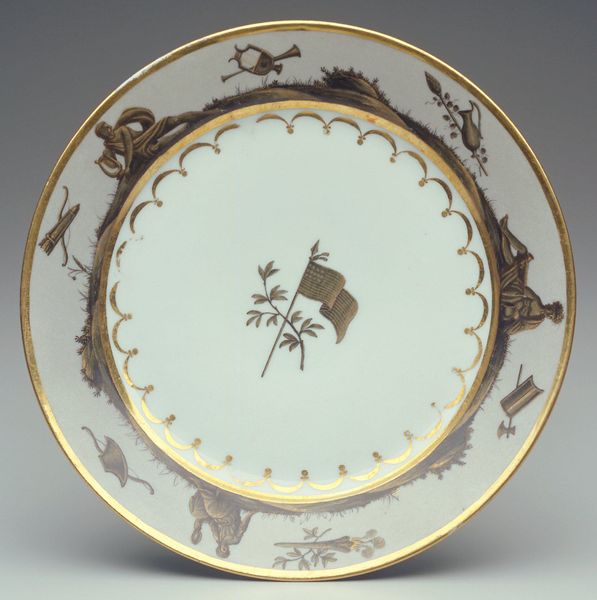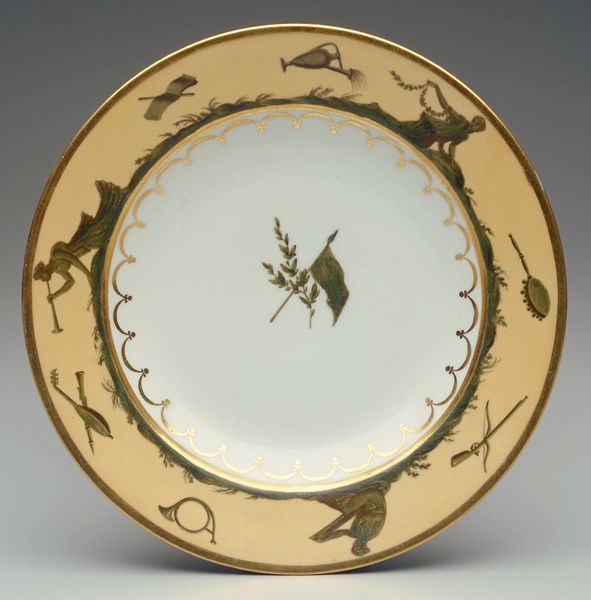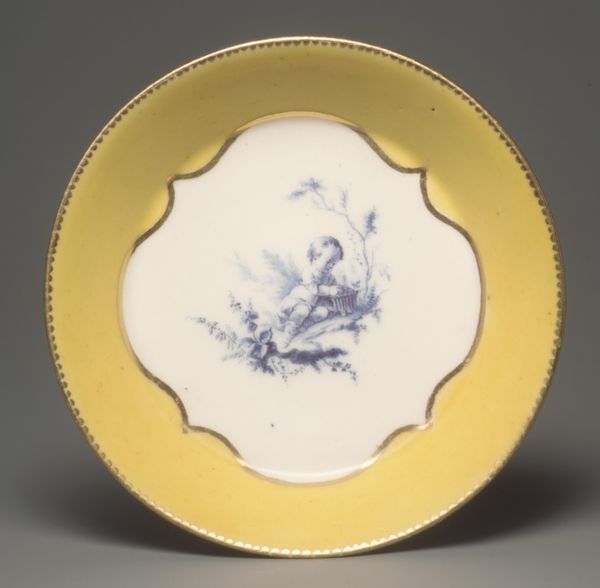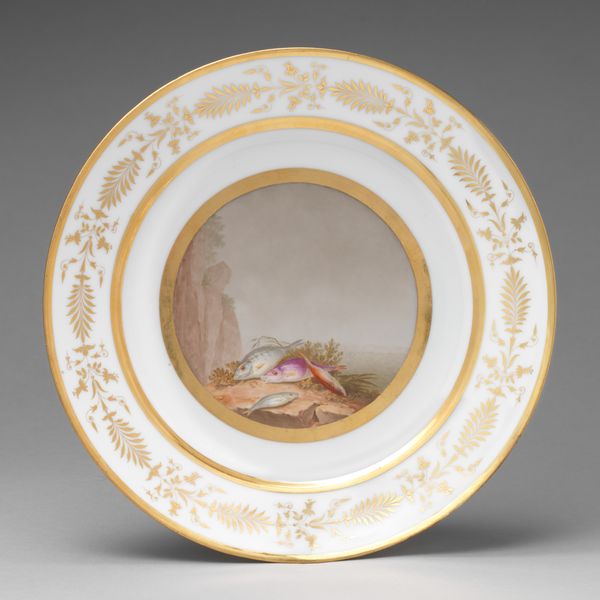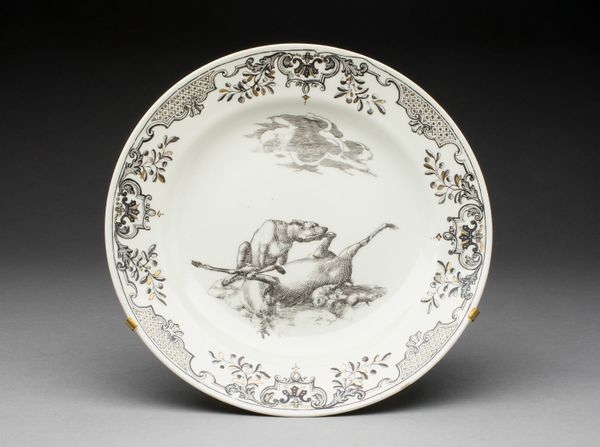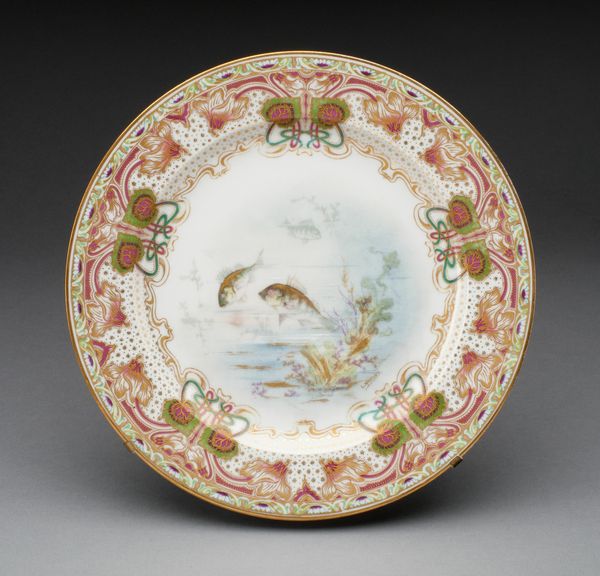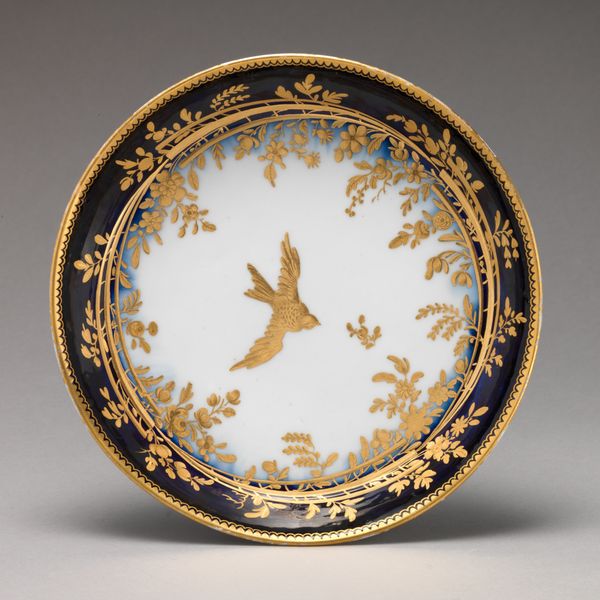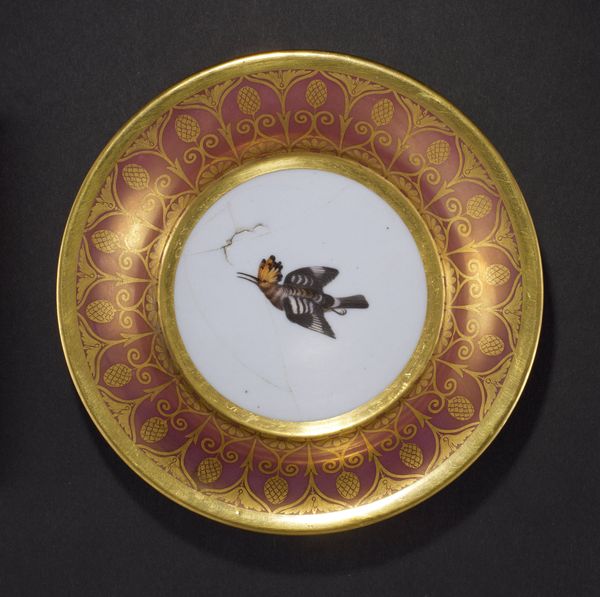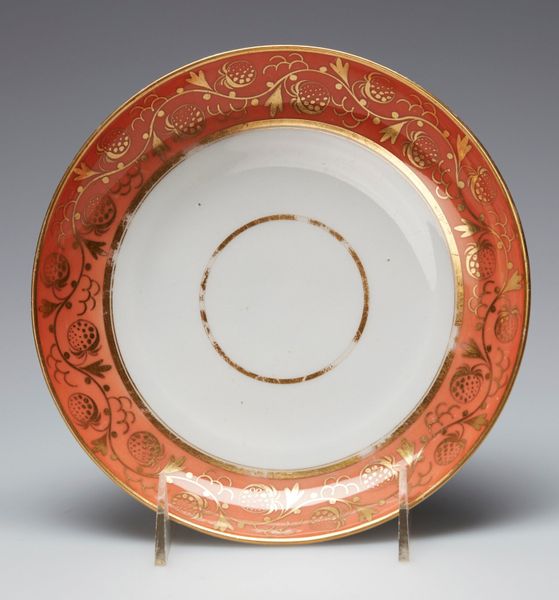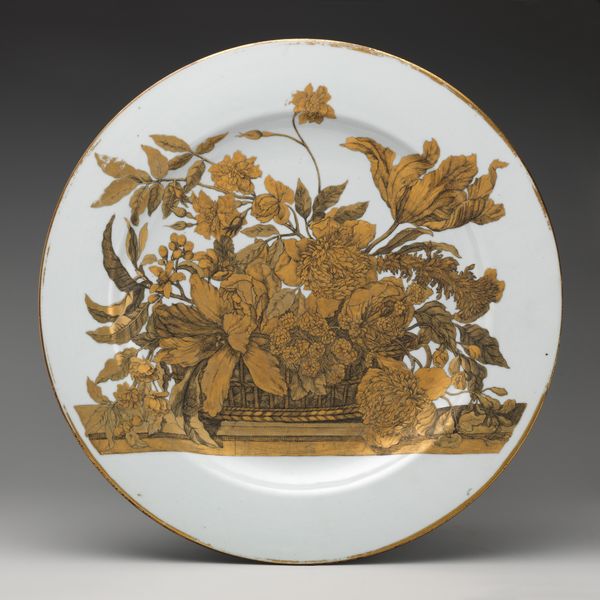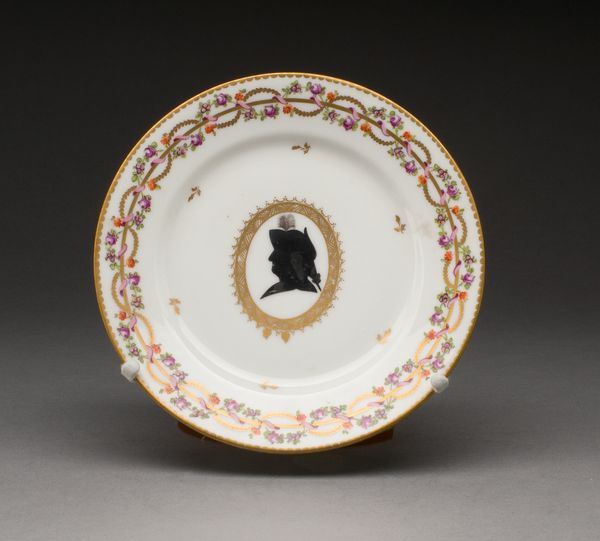
ceramic, earthenware
#
neoclacissism
#
ceramic
#
earthenware
#
ceramic
#
decorative-art
Dimensions: H. 1 1/4 in. (3.2 cm); Diam. 9 1/4 in. (23.5 cm)
Copyright: Public Domain
Editor: This is a "Dinner Plate" created sometime between 1800 and 1815 by Dihl et Guérhard. It’s earthenware and part of the decorative arts. I find the neutral palette elegant, but also subdued. What do you make of this piece, in its historical context? Curator: Well, immediately, the Neoclassical aesthetic comes to mind. It’s fascinating how objects like this dinner plate reveal the socio-political leanings of the time. The motifs—what do you notice about them? They seem more than just decorative, don't they? Editor: They do. There's a flag and some leafy branches in the center, and then other motifs along the rim – some weaponry maybe? Curator: Exactly! Think about the period. Post-French Revolution, Napoleonic era. Neoclassicism wasn't just an aesthetic preference, it was intertwined with ideas of civic virtue, order, and even imperial power. A dinner plate, like this one, became a stage for communicating such ideals. What impact do you think placing imagery of power and patriotism on everyday objects like this had on the consumer? Editor: It normalizes it? Almost like subliminal messaging in dining. It subtly reinforces those ideals. It's no longer confined to grand paintings in museums but part of domestic life. I'd be interested in seeing what foods were typically served on this dinner plate... Curator: Precisely! It all contributed to constructing a certain identity, both personal and national. And think about the patrons – who was consuming this imagery, both literally and figuratively? It wasn’t the common folk, it was a form of conspicuous consumption. Editor: This has totally changed how I see decorative art. I mean, I wouldn't have thought about how this plate reflected larger power dynamics, so that's super interesting! Curator: Right? Objects like this, often overlooked in favor of "high art," offer a powerful lens through which to examine social and cultural history.
Comments
No comments
Be the first to comment and join the conversation on the ultimate creative platform.
